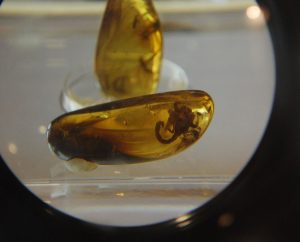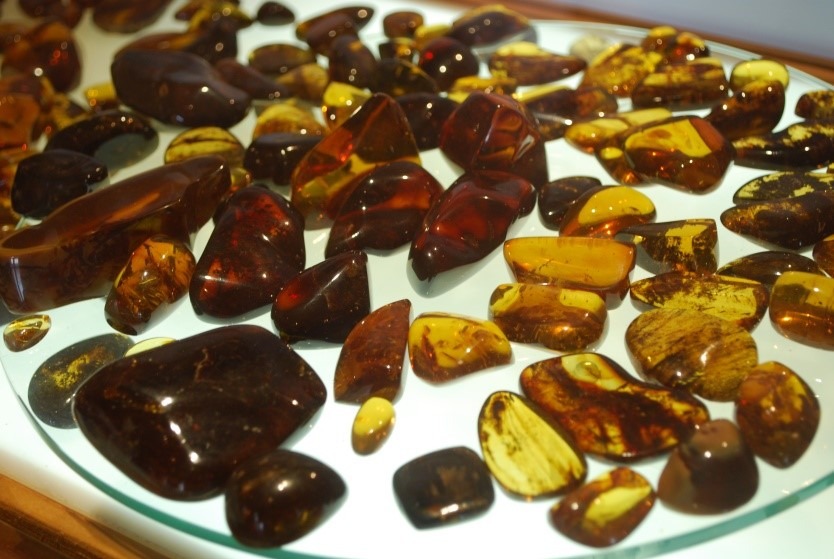MEXICAN AMBER
Amber´s beautiful hue is eye candy for any amber connoisseur; just knowing how these gemstones are formed brings a new appreciation to the wonder of nature. Imagine, resin being produced from the core of a tree and expelled through the bark to a broken branch, a surge of insects or a threatening fungus. The resin then hardens, seals and sterilizes to prevent any further injury to the tree…nature’s own antibiotic ointment. The resin is sweet and attracts insects of all kinds; they get trapped in the sticky resin and are left mummified…forever. If you’ve ever seen the movie Jurassic Park, you know the premise was to extract the DNA from a mosquito that was enveloped in resin to create dinosaurs. Not sure we want to bring dinosaurs back, however, great strides are being made in the scientific community of extracting DNA of plants and insects from amber to learn more about the Stone Age.
Most of the Mexican amber is found in the Simojovel region of Chiapas, a mere 1,400 kilometers south of Lake Chapala and is still being mined today. Most of the amber recovered dates as far back as 25 million years ago and comes from the extinct Hymenea tree. Amber that is mined in Simojovel can range in color from white-ish to almost black and believes to have healing and protective qualities. There is one coveted color sort of ‘the cherry on top’ that comes out of the Chiapas mines; red. Less than 5% of all amber that is mined in Chiapas is red. The unique color occurs during the fossilization process when the resin is deposited where the earth is softer, allowing air to reach the resin causing oxidization. Hence, this is why red is only found at the surface of a mine. The most common color is the same as its name implies, a brownish honey color, but there are in fact 256 identified shades of amber worldwide!
Amber is still being sold today promoting healing benefits for man and animal alike. Did you know you can buy an amber necklace to help with babies teething? How about an amber necklace for your dog to prevent fleas and ticks? If you think you’d like to buy amber with a piece of history inside…you can ask the vendors that sell gemstones at your local tiangis (outdoor market). I know from personal experience that amber containing an insect, or some botanical specimen is kept off the display table and usually in a bag in the street vendor’s pocket. Just ask and be prepared to pay a bit more. Next time you are holding a piece of amber in your hands, imagine that it may be over 25 million years old and its incredible journey to be discovered.
Polished Amber stones from Simijovel at the Museum of Amber in Chiapas, San Cristobal de las Casas, Mexico

Piece of amber with scorpion as seen through magnifying glass at the Museum of Amber in San Cristobal de las Casas, Chiapas, Mexico
Nova-Lee DoBush

